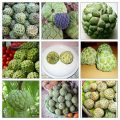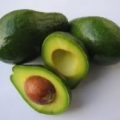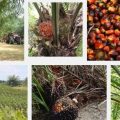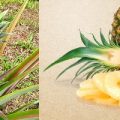Mangosteen (Garcinia mangostana L.) is a high-value tropical fruit that is widely-grown in the Philippines due to its well-regarded, unique taste and reputed health benefits. The fruit is covered in a perfectly round and dark purple rind that peels away and stains the fingers when opened, revealing a segment of soft, milky white flesh that practically dissolves in the mouth.
Off-season mangosteen

Mangosteen is mostly produced in Mindanao particularly in the Sulu archipelago, Zamboanga del Norte, Davao del Norte, Misamis Occidental, Davao City, and Agusan Del Sur.
Unlike other tropical fruits that can be enjoyed all throughout the year, mangosteen is abundant from August to September only, just as the rainy season begins. During regular season, where there is an abundance supply of mangosteen, a kilo costs Php25-35. During off-season, the price skyrockets to as much as Php250-300 for a kilo of mangosteen.
Looking at this great opportunity to boost the earnings of farmers, Agapito Regulacion, researcher and chief of the Davao Agricultural Research Central Experiment Station (DARCES) of the Department of Agriculture-Regional Field Office 11, developed a technology that will enable farmers to produce off-season mangosteen and earned as much as ten times its in-season price.

Initiated in 2015, the research project titled, “Development of Package of Technologies for Off-Season Production Mangosteen” was funded by the Bureau of Agricultural Research.
“Developing an off-season technology for mangosteen has the potential of bringing high profit to the farmers. With this technology, farmers can schedule the off-peak months wherein they can harvest mangosteen,” said Regulacion.
Off-season mangosteen technology
“The seed of mangosteen is apomictic, a form of asexual reproduction involving the development of an embryo without the occurrence of fertilization. It may be grown from seeds or asexually through grafting,” explained Regulacion.
In mangosteen, the flowering process is crucial in its fruit production. Attempts to induce its flowering process showed significant results in regulating the off-season production of mangosteen.

In the study, Regulacion used several research interventions to determine their efficacy in inducing fruit flowering in mangosteen. These included: pruning, plastic mulching, bark ringing, application of a chemical flower inducer (Paclobutrazol), and installing rain shelther.
Pruning involves cutting off one foot from the top of every lateral branch of the mangosteen tree while the plastic mulching involves installing 3.5 meters of UV plastic mulch at the base of the mangosteen trees.
According to Regulacion, bark ringing is an established technology, which he learned from Thailand. It is used for off-season rambutan but he tried it in this study to test if it will work with mangosteen. It involves scraping the bark, two feet from the base at one inch wide and on cambium layer deep. The scraped part is covered with transparent plastic to avoid fungal contamination.
The application of a chemical flower inducer (Paclobutrazol) was also tried in the study. It was applied at a rate 500ppm to five-week old leaves (from flushing) and to fully mature leaves.

Another intervention was the use of rain shelter (200 microns UV protected plastic sheet) as roofing material installed in a bamboo frame. Result of the study showed that this particular research intervention proved effective in inducing fruit flowering in mangosteen.
“It was observed that among the treatments tested, only the trees with rain shelter have induced flowering two months (60 days) after establishment. The other treatments have initiated leaf flushing,” explained Regulacion.
He added that, the high temperature and water stress cause the mangosteen trees to induce flowers. The microclimate inside the rain shelter was controlled resulting in a drought and higher temperature condition that triggered the trees to induce flowers after 60 days of stress period. During this period, carbohydrates begin to accumulate at the apical part of the leaves forcing the bud to break which then initiates the flowering process.
“Another important aspect of this technology is the establishment of a trench canal lined with plastic to enhance drainage of rain water and to avoid seepage,” he added.

“If farmers are able to adopt and use this technology effectively, they can predict the schedule of their production and identify easily when to produce them the best, which is during off-season where the price of mangosteen is high. If they can program their production and harvest them from December to February wherein mangosteen is not available, then it will be very profitable for them. The price is 10 times more during the off-season,” explained Regulacion.
Off-season versus in-season mangosteen
“As per data gathered, we found no difference on the fruit size and taste quality between off season and on season fruits. Although, season-produced mangosteen had more fruits with a yield of 58 kilos per tree while the off-season mangosteen had lesser yield of about 28 kilos per tree,” reported Regulacion.
Mangosteen has a distinct taste and a wide appeal. Regulacion mentioned that, generally, the white fluffy fruit has the right mix of sweetness and sourness into it, enough to crave one more after the next.
“The size of fruit is affected by the fertilization, climate, and the availability of water system in the growing area. These are essential elements to ensure that the mangostee trees will grow to its full potential,” Regulacion stressed.

He added that, as observed, mangosteen that are grown in higher elevation bear more fruit because of the colder climate, hence the harvest time is relatively prolonged. The maturity of the mangosteen fruit is affected by cold environment, the higher the elevation, the lower is the temperature. “Here in Manambulan, the harvest season is until September only, but those mangosteen that are planted in higher elevation, they can still harvest fruits until October,” he claimed.
Investing in off-season mangosteen
Initial investment of Php1M for off-season mangosteen technology will be costly but the returns are high as the year progresses. This is in addition to the income that a farmer gets from in-season mangosteen.
Adopting the planting distance of 5 x 10 square meters, a hectare can be planted with 200 trees. With an average of 25 kilos harvested per tree, a hectare of farm can produce around 5,000 kilos or five metric tons of mangosteen.
At an off-season price of Php250 per kilo, a farmer can have a gross sale of Php1.25 million. Minus the Php1M initial investment, this gives the farmer an initial net income of Php250,000.

During the first two years, a farmer can earn Php1.5M but in the succeeding year, he will just invest Php100,000 for the replacement of the bamboo frame, since the it has to be replaced every two years. The rain shelter can be used up to 15 years.
Farmer adopting the technology
Alfredo Mier manages a farm in Toril, Davao City was one of the first adoptors of the off-season mangosteen technology that was developed by DARCES.
“The technology was introduced to us by Dr. Regulacion when we were at DARCES. He taught us how to do, including when to install the rain shelter, so I got interested. I told the technology to the owner of the farm and asked if we can try it with our mangosteen trees and he gladly agreed,” recalled Mier.
“Our attempt in adopting the technology was a success. We tried it in our eight-year old mangosteen trees last August 2018. After two months, the trees produced flowers so by December they bore fruits already,” he happily reported.

“We wanted to harvest from December to March where there is no mangosteen in the market so that we can take advantage of the high price. Also, we don’t need to compete with big farms during in-season where us an oversupply of mangosteen,” he added.
He mentioned that the harvest during off-season is not as much as during in-season but with 10 times the price a kilo, the effort was worth it. “Kahit na mas kaunti yong bunga ng off-season mas bawi naman kami sa presyo nga off-season mangosteen,” he concluded. ### Rita T. dela Cruz
——
For more information, please contact:
Agapito Regulacion
Chief, Davao Agricultural Research Central Experiment Station
Department of Agriculture-Regional Field Office 11
Manambulan, Tugbok District, Davao City
mobile: 0916-5089696
email: agapitoregulacion@yahoo.com
Source: https://www.bar.gov.ph






